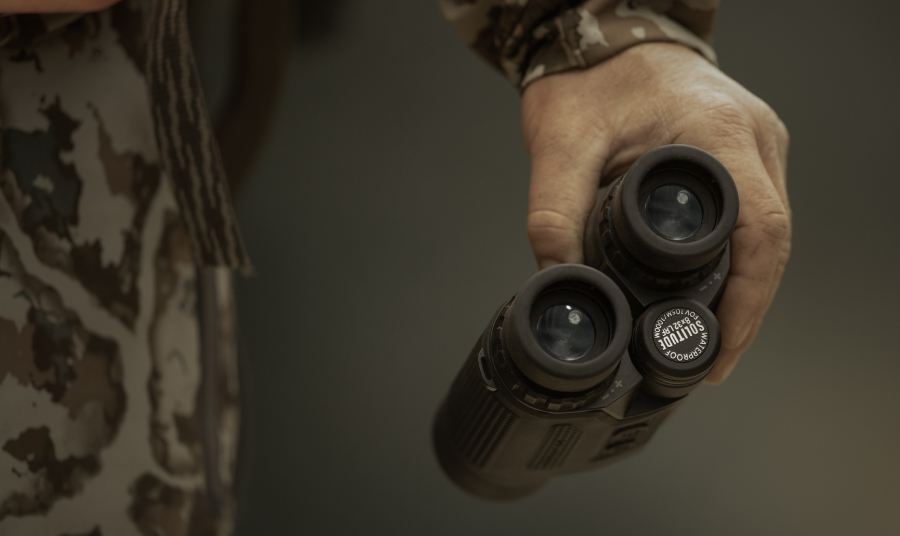Whether you're hunting, birdwatching, or simply exploring the great outdoors, the right binoculars can dramatically enhance your experience. But with so many models and specs on the market, how do you choose the best one? Understanding the key binocular statistics—such as magnification, field of view, and lens coatings—can help you make an informed decision tailored to your specific needs. This guide breaks down each major binocular feature and explains how it affects real-world performance, so you can select optics that deliver clarity, comfort, and durability in any environment.
Magnification: Bringing Distant Subjects Closer
Magnification refers to how much closer an object appears when viewed through the binoculars compared to the naked eye. It is typically represented by a number followed by an "x" (e.g., 8x, 10x). For instance, 8x magnification means the object appears eight times closer than it does without the binoculars.
Higher magnification allows users to see finer details at greater distances, which is crucial for identifying animals or observing their behaviors while lower magnification generally provides a wider field of view, making it easier to locate and track moving animals.
Conversely, higher magnification can amplify hand movements, making the image shakier. This might necessitate the use of a tripod or stabilizing mechanisms, while lower magnification often results in a brighter image because the exit pupil (the beam of light exiting the binoculars) is larger, allowing more light to reach the eyes.
For hunting and wildlife observation, there needs to be a balance between magnification and field of view. Typically, magnifications between 8x and 10x are recommended for these activities, as they provide a good compromise between detail, stability, and field of view.

Photo courtesy: Joseph Hart
Objective Lens Diameter: Light-Gathering Capability
A binoculars’ objective lens diameter refers to the size in millimeters of the lenses pointed towards the viewer’s target/objective. For example, in binoculars labeled 10x42 like the Sightmark® Solitude 10x42, the "42" indicates an objective lens diameter of 42 millimeters.
Larger objective lenses gather more light, resulting in a brighter image, especially in low-light conditions such as dawn or dusk. This improves clarity and detail, ideal for wildlife observation.
Objective lenses used in outdoor applications typically range from 32mm to 50mm. A common choice is 42mm, balancing light-gathering performance with portability.
Field of View (FoV): Tracking and Terrain Awareness
Field of View refers to the width of the area visible through the binoculars at a specific distance, usually expressed in “x feet at 1,000” yards or “x meters at 1,000 meters.” A FoV of 330 feet at 1,000 yards, for example, shows 330 feet of the landscape at that distance.
A wider FoV allows users to scan large areas quickly without moving the binoculars—ideal for tracking wildlife or navigating dense environments. Lower magnification generally increases FoV, while high-end lens design helps maintain image clarity even in wide views.
In forests and brushy terrain, wide FoV helps spot fast-moving or partially obscured animals. In open fields, higher magnification with narrower FoV may be preferable for distant identification.
Close Focus Distance: For Nearby Detail
Close focus distance is the nearest point at which binoculars can maintain a clear image. A close focus of 6.5 feet means you can clearly observe subjects that close.
It’s essential for viewing nearby details like insects, flowers, or birds in tight quarters. Naturalists, educators, and birders benefit most from this spec, though it's less vital for general hunting use.
Binoculars with very short close focus may trade off other performance metrics, so it's important to prioritize features based on your typical use.
Twilight Index: Measuring Low-Light Performance
The twilight index helps determine how well binoculars perform in dim lighting, like at dawn or dusk. It is calculated as:

For 10x42 binoculars like the Solitude 10x42 XD, the index is:

A higher twilight index indicates clearer low-light views, helpful when animals are most active. For serious hunters and wildlife watchers, this stat should not be overlooked.
Prism Types: Roof vs. Porro
Binoculars use prisms to correctly orient the image. The two major types are:
Roof Prisms
Roof prisms (like those in Sightmark’s® Solitude line) are aligned in a straight tube for a sleek, compact profile. They are easier to carry and better for rugged conditions. However, they require precision machining and can be pricier.
Porro Prisms
Porro prisms have an offset design that delivers better depth perception and brighter images at a lower cost. They are bulkier but can be advantageous for static observation where 3D realism and brightness matter most.
Prism Coating: Enhancing Optical Performance
Prism coatings improve image quality by reducing internal reflection and increasing contrast and brightness. Phase-correction coatings—used in Sightmark Solitude binoculars—sharpen resolution and color accuracy. These coatings elevate visual clarity across varying light conditions, especially important for spotting subtle animal movements in shaded environments.
Lens Coating: Clarity, Color, and Contrast
Lens coatings affect how much light passes through and how much glare is reduced. Multi-coated lenses, like those in the Solitude line, enhance image brightness and minimize distortion. This leads to richer, more natural visuals—key for spotting game or enjoying scenic views.
Focus Systems: Central, Individual, and Fixed
Central Focus
Central focus binoculars use one knob to adjust both barrels. They’re fast and intuitive, great for dynamic environments. Most include a diopter adjustment for personal vision correction.
Individual Focus
Each eyepiece adjusts independently. This method offers extremely precise control and is common in military/marine applications. It’s ideal for long-distance, stable viewing after initial setup.
Fixed Focus
Designed with preset focus, these binoculars are beginner-friendly and great for casual use. No adjustment needed, but image sharpness is limited to a certain range.
Conclusion: Choosing the Right Binoculars for You
Understanding key statistics is crucial for any outdoorsman seeking quality binoculars. These specifications collectively determine the binoculars' performance in various conditions, ensuring that users can enjoy sharp, bright, and clear images whether they are observing wildlife, hunting, or exploring nature.
The Sightmark® Solitude 10x42 XD Binoculars embody the perfect blend of these essential features. With extra-low dispersion glass, phase-corrected roof prisms, and multi-coated optics, they provide superb clarity, light transmission, and color accuracy. Their 10x magnification and 42mm objective lenses are ideal for spotting game from afar, while the rugged, waterproof design ensures they stand up to the elements. Twist-up eyecups and a magnesium bridge complete the package for comfort and durability.
Explore the Solitude 10x42 XD Binoculars now at Sightmark.com and upgrade your outdoor optics experience.
Frequently Asked Questions
What does magnification refer to in binoculars?
Magnification refers to how much closer an object appears when viewed through the binoculars compared to the naked eye. It is represented by a number followed by an 'x' (e.g., 8x, 10x).
How does higher magnification affect the performance of binoculars?
Higher magnification allows users to see finer details at greater distances, which is crucial for identifying animals or observing their behaviors. However, it can amplify hand movements, making the image shakier.
Why is a balance between magnification and field of view important for hunting and wildlife observation?
A balance between magnification and field of view is important because it provides a good compromise between detail, stability, and the ability to locate and track moving animals.
What does the objective lens diameter indicate in binoculars?
The objective lens diameter refers to the size in millimeters of the lenses pointed towards the viewer's target. Larger objective lenses gather more light, resulting in a brighter image, especially in low-light conditions.
What is the significance of field of view in binoculars?
Field of View refers to the width of the area visible through the binoculars at a specific distance. A wider FoV allows users to scan large areas quickly without moving the binoculars, ideal for tracking wildlife or navigating dense environments.




